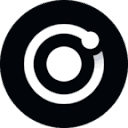What are Mobile Boilerplates?
Mobile Boilerplates are pre-configured templates or frameworks that offer a standardized structure for developing mobile applications. They provide a starting point for new projects by bundling commonly used patterns, components, and configurations, allowing developers to focus more on creating unique features rather than repetitive setup tasks.
Why Open Source Boilerplates Are Essential
In the rapidly evolving landscape of mobile development, the need for efficiency and consistency is paramount. Mobile Boilerplates play a crucial role by offering solutions that streamline the development process, reduce time to market, and maintain quality across different platforms.
Key Components of Mobile Boilerplates
Mobile Boilerplates typically include a set of essential elements that facilitate the development process:
- Code Structure: A well-organized directory with folders for components, views, services, and assets.
- Build Configuration: Scripts and configurations for building, testing, and deploying the application.
- Common Libraries: Pre-included libraries for tasks such as network requests, data storage, and UI components.
- Sample Code: Example implementations that demonstrate common use cases.
Benefits of Using Mobile Boilerplates
Efficiency and Time-Saving
Mobile Boilerplates significantly reduce the initial setup time of a project. Studies have shown that developers can save up to 30-40% of development time when starting a project with a boilerplate as opposed to setting up from scratch. This time efficiency translates to substantial cost savings. For instance, if a development team’s average cost is $100 per hour, saving 30% on a 100-hour project can result in a cost reduction of approximately $3,000.
Furthermore, the reusable components and code samples provided by boilerplates minimize the time spent on developing repetitive features, such as authentication, navigation, and data handling. This allows developers to allocate more time to innovating and refining essential features that differentiate the application in the market.
By reducing both development time and associated costs, mobile boilerplates enable startups and businesses to achieve faster time-to-market. This strategic advantage can be crucial in dynamic industries where being the first to launch new features often leads to greater market capture and competitive positioning.
Consistency and Standardization
Consistency and standardization are critical components in software development, particularly in mobile app development, where maintaining a uniform user experience and codebase across different platforms can be challenging. Mobile Boilerplates address this challenge by providing a unified framework that ensures developers adhere to common design patterns and coding conventions.
Key aspects of how boilerplates promote consistency and standardization include:
- Uniform Code Structure: By adhering to a common folder and file structure, boilerplates ensure that all team members can navigate and understand the project layout with ease. This reduces onboarding time for new developers and allows for smoother collaboration among existing team members.
- Pre-defined Design Patterns: Mobile Boilerplates come with built-in design and architectural patterns, such as Model-View-Controller (MVC) or Model-View-ViewModel (MVVM). Using these patterns, developers can maintain consistency in how logic and UI are separated, fostering a clean and scalable codebase.
- Style Guides and Conventions: Many boilerplates include style guides for writing and formatting code. These guides help maintain a consistent coding style, which is crucial for readability and reducing cognitive overhead when switching between different parts of the codebase.
- Reusable Components: Standardized UI components and modules included in mobile boilerplates ensure that the user interface looks and behaves consistently across the app. This uniformity not only enhances the user experience but also simplifies maintenance and updates.
- Integrated Testing Frameworks: By incorporating testing frameworks within the boilerplate, consistency in testing practices is achieved. This encourages developers to write tests in a uniform manner, ensuring that all features are consistently validated before release.
Overall, the consistency and standardization provided by mobile boilerplates lead to a more maintainable and scalable application. They minimize the risk of errors caused by ad-hoc and disparate coding practices, thereby enhancing the overall reliability and quality of the software.
Community Support and Collaboration
Community support and collaboration are vital elements that enhance the value of mobile boilerplates. Since many boilerplates are open-source projects, they benefit from the collective expertise and contributions of developers worldwide. This collaborative environment offers several advantages:
- Continuous Improvement: As an open-source resource, mobile boilerplates are regularly updated by community members who contribute bug fixes, performance improvements, and new features. This continuous feedback loop ensures that the boilerplates remain current with the latest industry standards and technological advancements.
- Shared Knowledge and Resources: Within the community, developers share insights, best practices, and solutions to common problems. This wealth of shared knowledge can significantly shorten the learning curve for new users of the boilerplate and provide seasoned developers with innovative approaches and techniques.
- Support and Troubleshooting: Community forums, discussion boards, and repositories offer a platform for developers to seek help and troubleshoot issues. Active community support means that questions are often answered quickly, providing prompt solutions to challenges encountered during development.
- Collaborative Innovation: Through collaborative projects, developers can experiment with new features and integrations, pushing the boundaries of what the boilerplate can offer. This collaborative spirit fosters innovation and allows boilerplates to evolve in ways that a single development team might not envision.
- Networking Opportunities: Engaging with the community provides networking opportunities with other professionals in the field. This is invaluable for personal and professional growth, enabling developers to build relationships and even collaborate on other projects beyond boilerplate development.
- Customization and Flexibility: Contributions from diverse community members often result in a modular and flexible boilerplate structure. This flexibility allows developers to easily adapt the boilerplate to different project needs, making it a versatile tool in a developer's toolkit.
In conclusion, the community surrounding mobile boilerplates is a dynamic ecosystem that significantly extends the capabilities and value of the boilerplates. By participating in these communities, developers can leverage collective knowledge and creativity, resulting in more robust, feature-rich, and reliable applications.
Types of Mobile Boilerplates
Mobile Boilerplates vary widely, catering to different platforms and development needs. Depending on the technology stack you choose, each type brings unique benefits and capabilities to the table:
- Swift UI Boilerplates (iOS): Specifically designed for developing iOS applications, Swift UI boilerplates provide native UI components and leverage Swift programming language for optimum performance and seamless integration with Apple's ecosystem.
- Flutter Boilerplates: Utilizing Google's Flutter framework, these boilerplates are ideal for building visually attractive, high-performance mobile applications that run on both iOS and Android. They provide a cohesive look and feel across platforms, utilizing the same codebase.
- React Native Boilerplates: Known for facilitating the creation of cross-platform applications, React Native boilerplates allow developers to use JavaScript and React to build applications with a native look and feel. They often come with support for libraries like Redux or React Navigation.
- Expo Boilerplates: Built on top of React Native, Expo boilerplates streamline mobile development by eliminating the need for native code, thus enabling rapid prototyping and easier sharing of React Native applications.
- Kotlin Boilerplates (Android): As the officially recommended language for Android development by Google, Kotlin boilerplates offer developers a modern, streamlined way to build native Android applications with features that enhance security, readability, and performance.
- Ionic Boilerplates: Combining the simplicity of web technologies with the power of mobile development, Ionic boilerplates facilitate the creation of hybrid mobile applications. They allow for the use of a single codebase to deliver apps with native-like performance across multiple platforms.
Each type of mobile boilerplate provides a specific set of tools and components tailored to its respective framework or language, enabling developers to choose the right boilerplate based on their project's requirements and desired platform reach.
Choosing the Right Mobile Boilerplate
Selecting the right mobile boilerplate can be a game-changer in accelerating your app development while maintaining quality and performance. With numerous options tailored to different platforms and frameworks, here’s how to make an informed choice:
- Determine Your Target Platforms: Decide whether you’re developing for iOS, Android, or both. Cross-platform frameworks like React Native, Flutter, or Ionic can be beneficial if you're targeting multiple platforms with a single codebase.
- Align with Your Project Requirements: Clearly define what your mobile app will do and which features are essential. Consider UI/UX needs, backend integration, and any specific libraries or modules you plan to utilize. Choose a boilerplate that offers built-in components and configurations to meet these needs.
- Evaluate Your Technology Stack: Consider the expertise of your team and the technologies you’re comfortable with. Whether it's Swift for iOS, Kotlin for Android, or a JavaScript-based framework for cross-platform apps, pick a boilerplate that complements your skills and development preferences.
- Consider Community and Support: A strong community can be a tremendous asset. Look for boilerplates with active forums, frequent updates, and a wealth of resources or examples. This support network can be invaluable for resolving issues and sharing best practices.
- Analyze Scalability and Performance: Choose a boilerplate that supports your app's current functionalities and can scale as demands grow. Performance metrics and benchmarks can provide insights into how the boilerplate handles complex operations and larger user bases.
- Understand Licensing Terms: Make sure the boilerplate’s license allows for commercial use if your app is for profit. Ensuring compatibility with your project’s legal requirements will prevent future complications.
- Test with Prototypes: Create small prototypes with potential boilerplates to see how well they support your development and how easily you can adapt them to your specifications. This hands-on approach will highlight the practical strengths and limitations of each option.
By thoughtfully assessing these factors, you can select a mobile boilerplate that not only accelerates development but also ensures a robust, efficient, and scalable app. The right boilerplate provides a foundation for innovation and quality, allowing you to focus on crafting an exceptional user experience.

